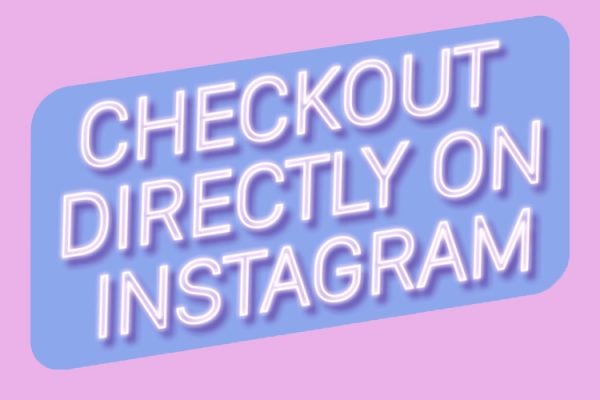 Although 2019 is still in its infancy, the year has already seen massive success for one ecommerce business in particular. Amazon started 2019 by becoming the world’s most valuable public company and largest online retailer. But, where does this leave other ecommerce companies? The sector has long been a competitive one and in 2019, brands, retailers, and independent sellers alike must take the fight to Amazon and develop strategies to drive customer preference and loyalty. A key to this will be managing customer expectations and improving customer experience, achievable, in large part, by creating comprehensive, reliable and engaging product information across all e-commerce channels.
Although 2019 is still in its infancy, the year has already seen massive success for one ecommerce business in particular. Amazon started 2019 by becoming the world’s most valuable public company and largest online retailer. But, where does this leave other ecommerce companies? The sector has long been a competitive one and in 2019, brands, retailers, and independent sellers alike must take the fight to Amazon and develop strategies to drive customer preference and loyalty. A key to this will be managing customer expectations and improving customer experience, achievable, in large part, by creating comprehensive, reliable and engaging product information across all e-commerce channels.
Steve Gershik, CMO, inRiver, shares the top five pieces of product information businesses have to get right in order to succeed in 2019.
Taking on the Marketplace Giants: Five Pieces of Product Data you Need to Succeed in 2019
1. Shipping & Inventory
In an age where the likes of Amazon and ASOS have made free and next day delivery a customer expectation, the way in which a seller communicates delivery dates and rates is critical to avoiding cart abandonment. The onus is on the retailer to ensure a user-centric rather than business-centric approach. For example, by providing buyers with total order costs with shipping rather than sub-totals or offering specific delivery dates and times, rather than estimated shipping speeds. Such information allows buyers to conduct rapid comparisons and facilitates a quick and easy check out with full confidence in the seller. Real-time stock or inventory and purchase information are also important to creating a sense of urgency and nudging buyers across the checkout line – there’s nothing that can kick a consumer into action quite like knowing somebody else might beat them to that final item in stock.
2. Buying Guides
The time to convince shoppers to purchase is short. Our recent report found that almost half of shoppers visit at least two different online sources before making a purchase decision in order to find the best overview of product information. Well-curated buying guides that provide extensive visual graphics, contextual images and detailed copy assists consumers through the pre-purchase research phase without moving away from a retailer’s site. Buying guides are an opportunity to offer unique product insights for existing customers, as well as a tactical move to gain an edge over competitors in attracting new buyers and establish authority for the seller.
3. Ratings & Reviews
Online stores act as a virtual shop window to attract consumer attention. However, without the experience touching, feeling, and sampling products in person, offering ample and accurate consumer reviews is crucial to engaging with consumers and influencing their final purchase decisions. These ratings and reviews reassure customers they are buying the product which best meets their needs. In fact, this type of content is one of the most commonly searched for information, with 58% of buyers deeming it crucial to following through with a purchase.
4. Compelling Imagery
Consumers can be fickle; one fifth of buyers will move away from an online marketplace instantly if there are no pictures of the product they desire. According to our research, over half (52%) stay less than 30 seconds before moving on to a competitor. As a result, it becomes imperative to engage consumers immediately with convincing and high-quality product content and imagery that provide a full brand experience from the outset.
Rich assets such as images with full zoom capabilities, videos providing context and interactive 360 product views, are central to piquing consumer interest. When coupled with creative and engaging product descriptions, consumers will not only create emotional connections between the two, but products will also rank higher in search engines.
5. How-to Videos
Video has become one of the most powerful forms of product marketing, with a third (33%) of consumers more likely to buy a product if there is a video showing the product in different contexts. “How-to” videos showcase products and use storytelling to organically highlight its qualities, providing buyers with a more in-depth understanding prior to purchase.
Recent research from Google found that ‘how-to videos’ earn the most attention of any content category on YouTube. Our own research also found YouTube to be the most trusted platform for video information about products, as well as the most influential platform alongside Facebook and Instagram for 18-24 year olds purchasing a product. It is therefore crucial that marketers consider investing advertising budget in these channels when determining where to place video content. The creation of engaging video content also encourages consumers to spend more time on a particular page, consequently increasing its value and SEO ranking.
Ultimately, if marketplaces are unable to successfully provide engaging product content, they not only risk losing out to competitors as customers search for information elsewhere, but also on revenue as disenchanted consumers return unwanted products that misalign with expectations. The expected growth of ecommerce in 2019 is an exciting opportunity for marketplace retailers and they must bridge the gap between product expectations and the reality of the products to truly capitalise.







